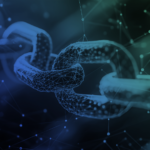Data Science in Automotive Industry
The automotive industry continuously experiences many innovative successes and a dynamic set of challenges.
Changing consumer preferences, technological advances, economic conditions, globalization, and supply chain conditions create competition, pressure, and volatility for manufacturers and car dealerships alike.
For key players in the auto industry, it’s important to expect future changes in the market and have an actionable plan to adapt, scale, and remain agile in a changing environment.
Some factors in the changing auto environment include autonomous vehicles, manufacturing processes and technologies, and heightened consumer expectations. As the auto industry evolves, the relationship between the key planners and data science becomes increasingly important and known.
While the auto industry has historically always taken a more traditional approach to manufacturing, marketing, and selling, key players have increasingly embraced the growing relationship between automakers and data science.
How data science is used in every step of the automotive lifecycle
Data science uses scientific methods and processes to gain knowledge from small or large data sets and applies the knowledge across a range of areas.
Technology provides automakers with the data needed to streamline their processes more efficiently and transparently, reducing waste and increasing profits to a scalable degree. It also provides them with the knowledge to better understand their customers, anticipates bottlenecks throughout the supply chain, and react to global events that might negatively affect the industry.
Automakers use data science in many areas of the automotive lifecycle, including:
- Product development
- Supply chain
- Manufacturing
- Sales and marketing
- Finance
Each of these areas uses large amounts of data and information in developing and delivering cars into the hands of the end-users. Here are some ways automakers use data science throughout the automotive lifecycle.
Data science in product development
Product development involves brainstorming and engineering a new idea in a specific market or improving an existing product to solve a set of customer pain points better. For example, automakers use data science to analyze car model configurations, component reliability, and conduct testing in small scales before implementing at the manufacturing level.
For example, automakers will test out how various components and systems will change the vehicle’s reliability at different stages of the product development process to ensure that the overall design is secure. In addition, they use data science to help run simulations of how the different components function in the car design and analyze their performance to determine whether the design is feasible.
Data science in manufacturing
Data scientists help engineers analyze data from operations, finances, and suppliers to ensure that each step moves smoothly and on time. For example, a team of data scientists might focus on the performance of car part suppliers to ensure that they are located in an economically feasible area, are always able to deliver components on time, and charge fair prices according to industry standards.
Data science in sustainability
Consumers and the auto industry have become more aware of sustainability challenges and initiatives. As a result, automakers use data science to optimize fuel and emissions efficiency according to government targets while maintaining their sales and profit targets. For example, a car brand can use data scientists to minimize the fuel consumption of their vans and pickup trucks and determine the optimized number of electric cars in the product line. Fuel optimization also helps automakers claim government credits for their sustainability efforts.
Data science in sales and marketing
Automakers use data science to gather customer information and forecast customer behaviours. It improves the customer journey by predicting the future direction of customer expectations, improving product quality, and personalizing the purchasing experience.
What exactly is big data in the automobile industry?
Big data is the compilation of large amounts of complex information used to generate and forecast trends and deliver new and improved user experiences. In the automobile industry, big data can improve user connectivity and driver safety.
For example, a car with a connected system gathers information through the GPS system, sensors, cameras, and electronic control units. These real-time insights are transmitted and processed by data scientists so automakers can make effective business decisions. This includes reducing manufacturing defects, optimizing the utilization of resources, and decreasing operating costs. It also tracks the performance of critical components, such as the engine, brakes, and battery, to ensure that drivers and their passengers have reliable vehicles that are safe, long-lasting, and easy to maintain.
How is the auto industry developing?
In response to changes in government policies, the economic landscape, and consumer preferences, key players in the auto industry are shifting all aspects of how they operate. To remain competitive in the industry, automakers are leveraging data science in three key areas:
- Product offerings
Automakers are developing new product offerings constantly with new models and better features. Key players in the industry need to continuously and quickly deliver high-quality vehicles that exceed changing expectations and address challenges like efficiency, fuel consumption, cost, and performance optimization.
- Operations
Automakers need to be resilient with changing global environments that could challenge operations and the supply chain. When manufacturers and dealerships are able to scale and stay agile in the competitive industry, they can increase profits and react to unexpected bottlenecks effectively.
- Customer engagement
Improving customer engagement boosts loyalty. Automakers are increasingly focused on a streamlined experience that allows them to engage with customers using multiple channels and touchpoints to provide better customer experiences and services.




